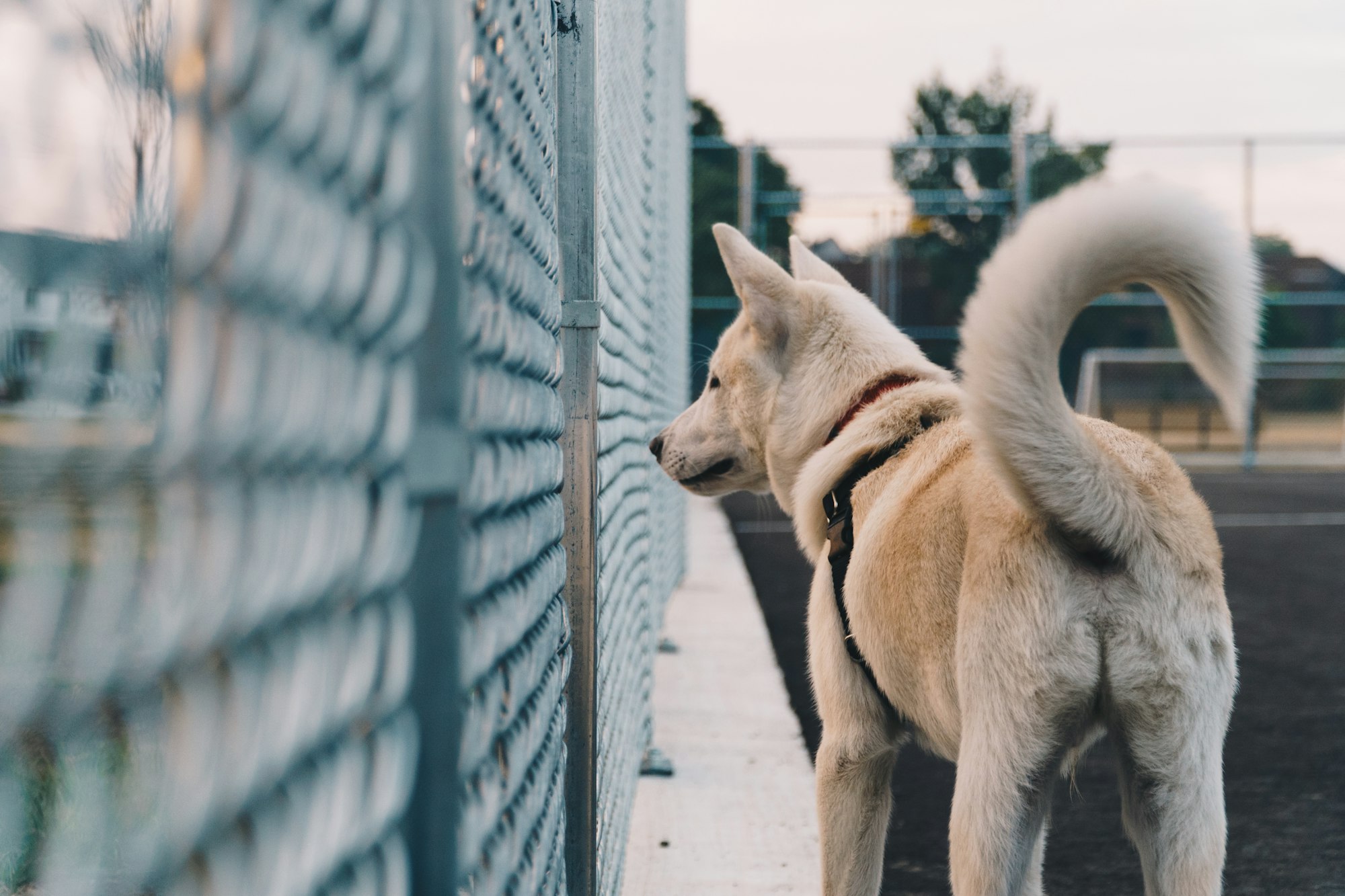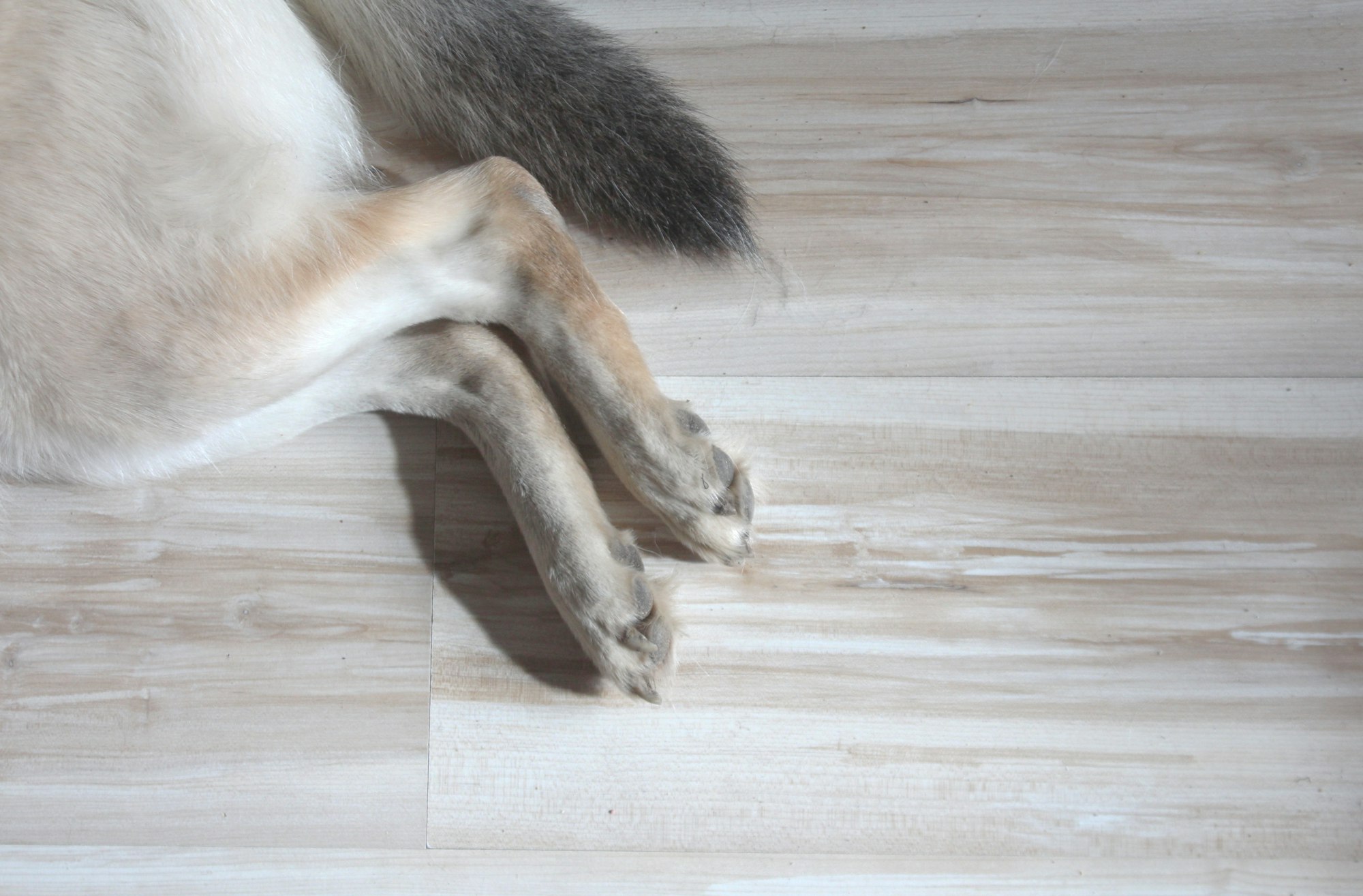Many dog owners have wondered why their dogs have tails. Since most dogs have tails, it's a safe assumption that they have a purpose. A dog's tail has a number of purposes that are important to how they navigate their daily lives. A dog's tail is one of the most important pieces of their anatomy.
Let's take a look at the amazing purposes of a dog's tail and the various ways dogs use their tails.
Why Do Dogs Have Tails?
A dog's tail is made up of a series of vertebrae, muscles, and ligaments that all work together to provide the dog with a way to express emotions, communicate with other dogs and humans, and provide balance while moving.
The tail is one of the most visible parts of the dog's body and is often used to convey the dog's feelings.
Maximize Your Dog’s Well-being with Every Wag! Just as your dog’s tail plays a crucial role in communication and balance, our cutting-edge GPS Collar helps you stay connected to their health and location. By tracking their daily activity, you gain insights into their well-being that go beyond what meets the eye. Ensure your furry friend’s happiness and safety with real-time location tracking and activity monitoring. Click here to discover more and get your GPS Collar today—because every wag counts!

Movement and Balance
Most dog breeds are built for some sort of work, even if they aren't used that way on a regular basis. But your dog doesn't need to be a working breed to see their tail in action. You can see it during a game of fetch or while your dog is chasing after something. What you will see is that your dog's tail helps with agility and movement.
When your dog runs, the front legs go in the direction of travel. When your dog makes a turn, they will turn their front legs, while the rear legs continue in the original direction. The tail will move in the new direction, along with the front legs. Turning the tail in the direction the body is moving serves to balance your dog so they don't fall when making turns, especially at speed.
Dog tails serve as a counterbalance to the weight of their body. If you watch your dog walk along a narrow ridge or climb on uneven ground, their tail wags back and forth in the direction their body moves.
This helps a dog maintain balance by tilting their weight to the opposite side. Dogs using their tail for balance will hold their tail high in the air, much like a tightrope walker holds a balance bar to stay on the rope.

Communication
It shouldn't be surprising that dog tails communicate messages to humans and other dogs. It's safe to say that most dog owners are greeted daily by a wagging tail when they come home from a long day at work. While this indicates that we have a happy dog, this isn't the only message a wagging tail can send.
Tail wagging can indicate friendliness or happiness, but it is also a way your dog spreads their scent. A dog wagging their tail is contracting muscles around their anal glands. The more the tail wags, the more the dog's unique scent is released. A dominant dog will automatically hold their tails high, while submissive dogs keep their tail lower to keep their scent hidden.
Interestingly, tail wagging isn't natural behavior for dogs. Puppies learn dog language from their mothers or another adult dog and very young puppies don't wag their tails. Puppies begin tail wagging around 30-50 days of age; around the same time they start playing with their littermates. Dogs' tails are one way puppies begin to communicate with each other and other dogs.
Other Ways Dogs Use Their Tails
There are several other reasons dogs have tails and different breeds use their tails differently.
- Northern breeds are known for covering their noses with their tails. In this case, tails provide warmth in cold, wintery weather.
- Scent hounds and other dogs bred for running have longer tails that resemble a whip. By keeping their tail straight they can use them to change direction quickly at high speeds.
- Water dogs have tails that are thick and act like paddles during swimming. They function in a similar fashion to a rudder on a boat.

The Social Aspect of a Dog's Tail
How Do Dogs Use Their Tails to Communicate with Other Dogs?
Dogs have an incredibly complex social system that involves different cues, signals, and postures. The tail is a big part of their communication system, and dogs use it to send signals to other dogs.
For example, when two dogs first meet each other, they often give each other a tail wag. This is a sign of friendship and a way for the dogs to show they are friendly toward one another. In contrast, dog tails can also be used to show aggression. If a dog feels threatened or is in a confrontational situation, they may raise their tail to make themselves appear larger and more intimidating. This can be either a fearful or aggressive response and is a way for telling the "threat" to back off.
Learning dog tail language is an important skill for understanding how your dog feels and what your dog is trying to communicate in a given situation.
Happy Tail Messages
- Tail wagging spreads a dog's scent through their anal glands
- The higher the dog carries the tail, the more scent is spread
- Happy, playful dogs carry their tails high in the air
- A dog wags their tail while laying down
- Dogs' tails wagging in circles show excitement
- A slow wag shows confidence and security
- A curly tail that follows a natural curve over a dog's back shows relaxation
Nervous, Submissive, and Aggressive Tail Messages
- Tail wagging doesn't always indicate happiness
- A frightened dog will hold a high tail position
- A rigid, straight tail shows uncertainty. Puppies do this frequently in new situations
- A low, slowly wagging tail shows nervousness
- A tail that's held horizontally to either the left or right side indicates a dog feels threatened
- A tail tucked or held between the back legs shows fear, stress, and submission. Such dogs are trying to cover up their anal glands and avoid spreading their scent
- A tail wagging quickly but tucked down shows anxiousness
- Aggression is shown with a rigid, straight tail. Some dogs will also wag their tail very slowly. Unfortunately, this message is often mistaken for friendliness due to the tail wagging and can lead to accidental bites.

What About Dogs with No Tails?
Wild dogs have tails that are big, long, and bushy, but not all domestic dogs do. Over time, as humans have tinkered with breeding and genetics, some dog breeds are born with very short tails, while others have no tails at all. Add in the occasional practice of tail docking and it becomes more difficult to read tail signals.
Breeds like the French Bulldog and Pembroke Welsh Corgis are often born with naturally bobbed tails. While they can't "wag" their tail the same way other breeds do, you will notice the dog's rear swinging widely when they get excited. This is because they still have the tissue on their hind end that "wags" their tail. They just wiggle their butt instead.

While you would think that these short-legged dog breeds need their tails as much as other dogs, they seem to do just fine. Some dogs without tails, like the Jack Russell, are among the fastest and most agile breeds in the world. Scientifically speaking, there aren't any studies that show the differences in locomotion between dogs that have tails and those that don't, so it remains a mystery as to why certain breeds function so well without them. There is some evidence to suggest that these dogs are at a disadvantage with regards to communication. While they use other body language to convey their message, they are in jeopardy of miscommunication with other dogs.
Tail Docking
Tail docking is a surgical procedure that is done purely for cosmetic purposes. While some pet owners maintain that hunting breeds can benefit from tail docking to avoid injury, the American Veterinary Medical Association states there isn't enough evidence to back up this claim. Tail docking can be very painful and it impairs a dog's attempt to communicate with the world around them.
There may be times when it's medically necessary to amputate a tail. Dogs who break bones located in their tail or suffer from injuries where the skin is removed from the tail may require amputation to prevent further pain and injury.
How Do Dogs Without Tails Communicate?
Regardless of why a dog has no tail, they are forced to use other body language to communicate with those around them.
Here are some ways dogs communicate without their tail:
- Vocalizations like growling, barking, or whining
- Facial expressions like curling their lip, submissive grinning, or lip licking
- Eye position – direct eye contact, staring, whale eye
- Ear position – pinned ears, perky ears, relaxed ears
- Body posture – stiff, relaxed, cowering, play bowing, raised hackles
- Movement – lunging, lying down, pacing
Tail Wagging in Puppies
Most people are surprised to learn that puppies aren't born wagging their tails. Pups learn to wag their tails by the time they are six or seven weeks old and there are differences between breeds. Research shows that most pups are wagging by about 49 days old.
The reason puppies aren't born with the ability to wag their tail is probably the same reason why they are born without sight. It serves no purpose for a newborn pup to use social cues. By the time they reach an age where they need to communicate with others, they are developed enough to use their tails.
The Importance of Tail Maintenance
It's important to make sure a dog's tail is taken care of, given that it's such a vital part of a dog's body. This means the fur should be brushed regularly to keep it free of debris and tangles. It's also important to make sure your dog doesn't sustain tail injuries or damage. If the tail is injured or damaged, it can cause pain and discomfort for the dog. It also causes significant impairment in their communication methods.

Conclusion
Dogs have tails for three primary reasons: movement, balance, and communication.
Tails also serve other purposes, like helping to keep dogs warm in cold weather. The tail is an amazing and important part of a dog's anatomy that should be taken care of. The next time you notice your pup wagging their tail, take a moment to appreciate all the things a dog tail does.
Visit the Off Leash blog at TryFi.com for more helpful articles about pet-parenting tips.
Would you like to learn more about TryFi.com? The Fi Dog Collar is a GPS tracking collar that not only tracks your dog's location, activity level, and sleep pattern, but also alerts you if your dog escapes. If your dog escapes, this is the fastest way to find him. Give the Fi Dog Collar a try today!

